Yoga Blog
Nourish Your Yoga Flow: Best Foods to Avoid Bloating
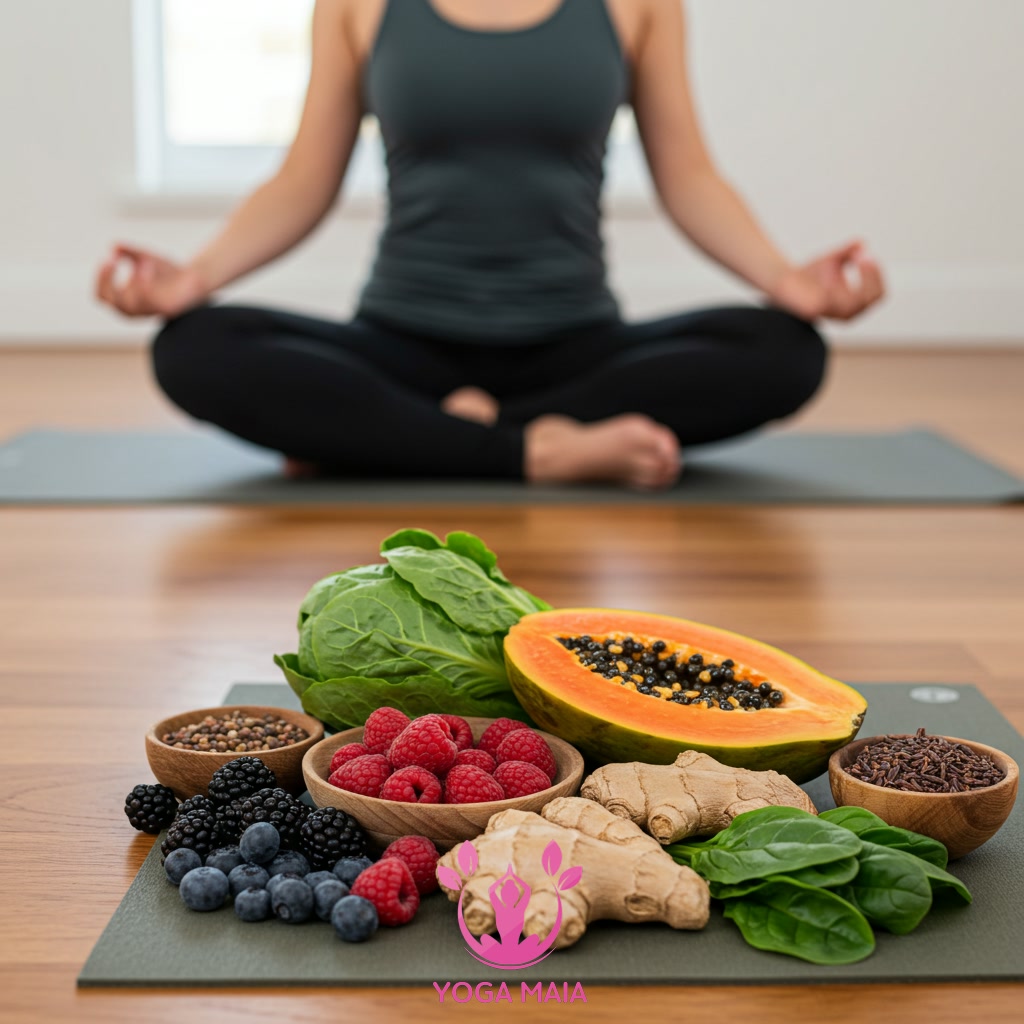
This content explores optimal food choices to support a comfortable and effective yoga practice. It focuses on identifying foods that help prevent bloating, allowing practitioners to move through poses with greater ease. By making mindful dietary decisions, individuals can nourish their bodies and enhance their overall yoga experience.
Table of Contents
- Section 1: The Connection Between Diet and Your Yoga Practice
- Section 2: Why Bloating Disrupts Your Yoga Flow
- Section 3: Common Foods That Cause Bloating (and to Limit Before Yoga)
- Section 4: Digestive-Friendly Foods to Support Your Practice
- Section 5: Timing Your Meals and Hydration Around Yoga
- Section 6: Practical Tips for a Bloat-Free Yoga Session
Section 1: The Connection Between Diet and Your Yoga Practice
The food you consume has a profound impact on how you feel, and this directly influences your yoga practice. When you step onto your mat, your body’s state—whether it feels light and energized or heavy and sluggish—significantly affects your ability to move through poses with ease and comfort. Foods that cause digestive discomfort, such as bloating, gas, or indigestion, can make bending, twisting, and holding poses feel restrictive or even painful. Conversely, choosing foods that are easy to digest and provide sustained energy can promote a feeling of lightness and fluidity, allowing for deeper stretches, smoother transitions, and a more focused and enjoyable practice. Understanding this connection is the first step towards using diet as a tool to enhance your yoga journey.
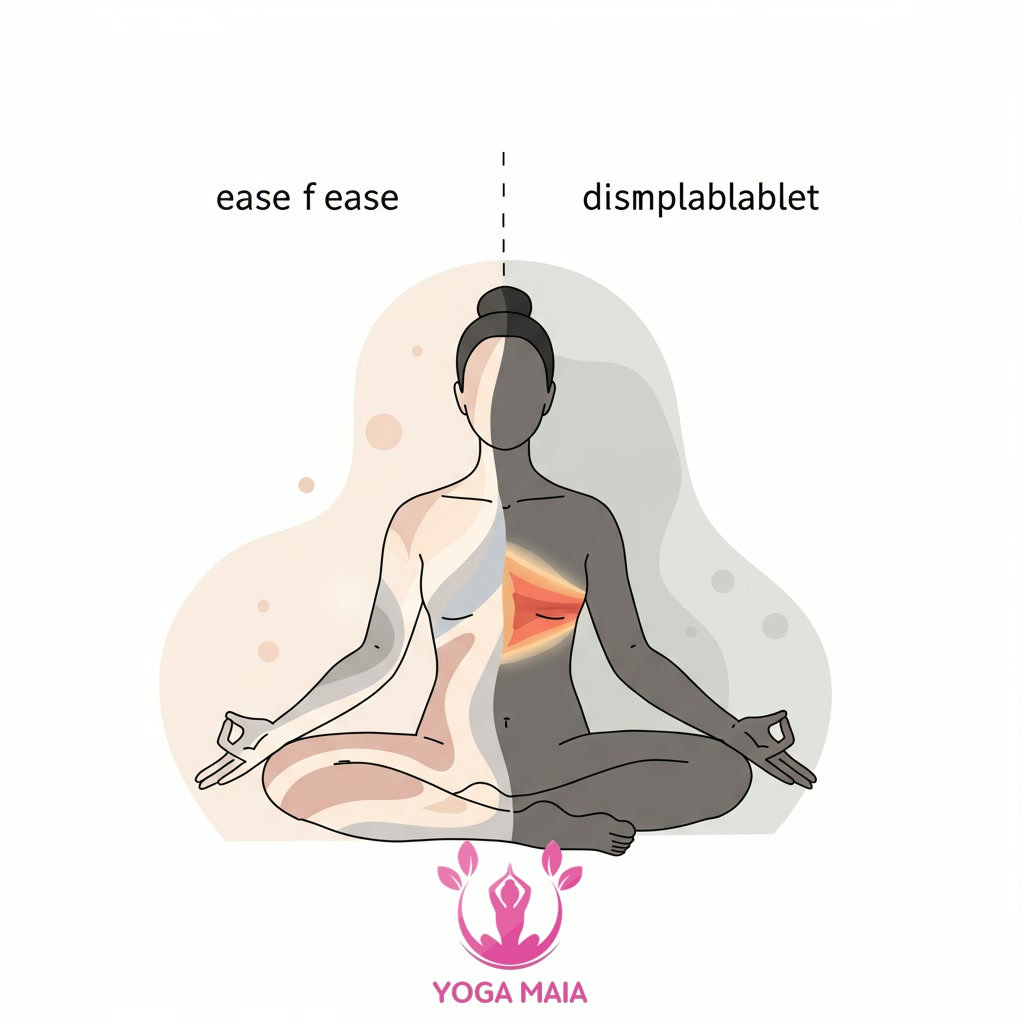 The Connection Between Diet and Your Yoga Practice
The Connection Between Diet and Your Yoga Practice
Section 2: Why Bloating Disrupts Your Yoga Flow
Building on the idea that your body’s state impacts your practice, bloating is a prime example of a physical discomfort that directly hinders your yoga flow. That feeling of tightness, pressure, and fullness in your abdomen makes it difficult to move freely and comfortably through poses. Twists become restricted, forward folds feel compressed, and even simple movements can feel awkward or painful. Beyond the physical limitations, bloating can be a significant mental distraction. Instead of focusing on your breath or the nuances of a pose, your attention is drawn to the discomfort, breaking the mind-body connection essential for a fulfilling practice. By addressing and minimizing bloating, you remove a major barrier, allowing for greater ease, flexibility, and presence on your mat.
 Why Bloating Disrupts Your Yoga Flow
Why Bloating Disrupts Your Yoga Flow
Section 3: Common Foods That Cause Bloating (and to Limit Before Yoga)
Certain common foods can contribute significantly to bloating, making your yoga practice uncomfortable. High-fiber vegetables like broccoli, cauliflower, and cabbage, while healthy, can produce gas during digestion. Legumes such as beans and lentils are also notorious for causing bloating due to their complex sugars. Dairy products, especially for those with lactose intolerance, can lead to digestive upset and gas. Carbonated beverages introduce excess air into the digestive system, causing distension. Additionally, processed foods high in sugar alcohols or artificial sweeteners can ferment in the gut, leading to gas and bloating. Limiting or avoiding these items in the hours before your yoga session can help ensure a lighter, more comfortable feeling, allowing you to flow through poses with greater ease and focus.
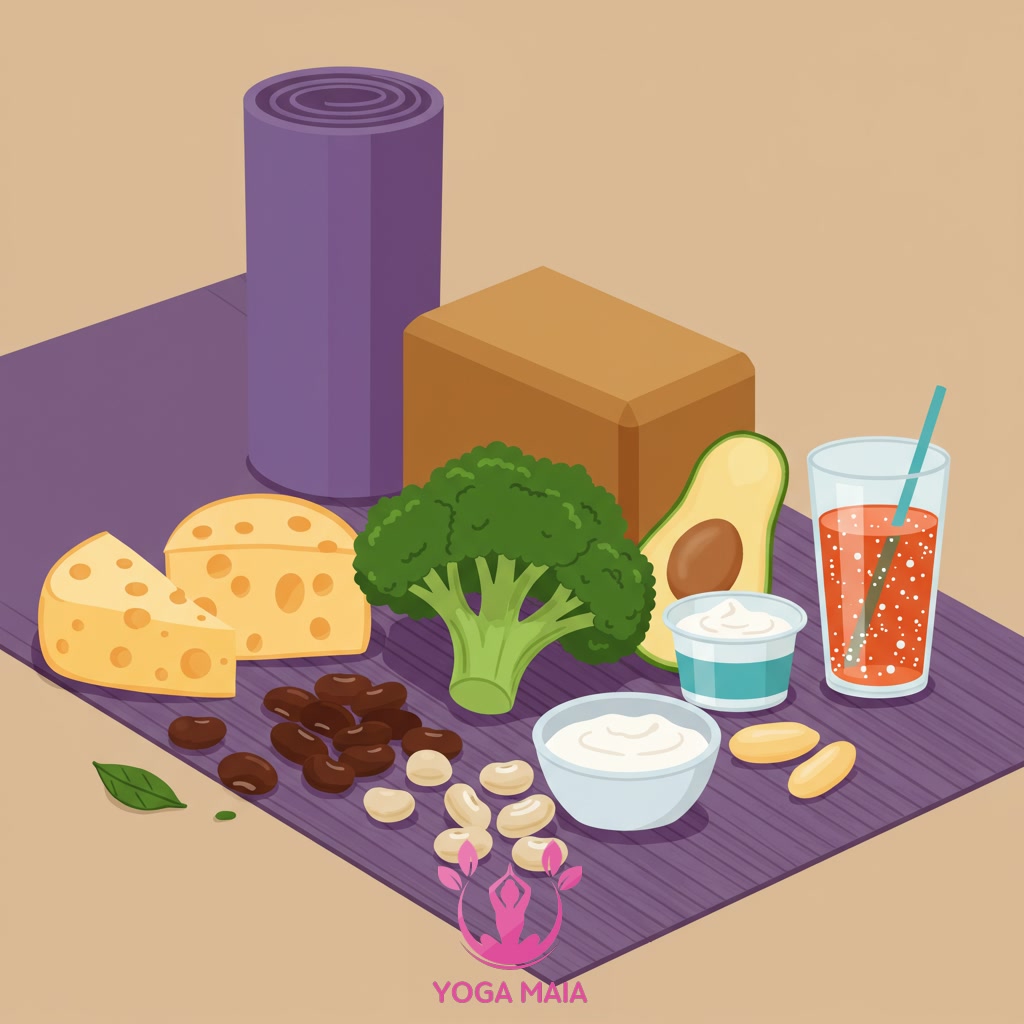 Common Foods That Cause Bloating (and to Limit Before Yoga)
Common Foods That Cause Bloating (and to Limit Before Yoga)
Section 4: Digestive-Friendly Foods to Support Your Practice
Moving beyond foods that cause discomfort, let’s explore options that actively support a comfortable yoga session. Focusing on easily digestible foods before practice can significantly reduce bloating and gas. Think simple, whole foods that your body can process efficiently. Good choices include ripe bananas, berries, and other low-acid fruits. Cooked, easily digestible vegetables like spinach or zucchini are preferable to raw, cruciferous ones. Lean protein sources and simple grains like white rice or oats (prepared simply) are also gentle on the digestive system. These foods break down quickly, minimizing fermentation and gas production, allowing you to move through poses like twists and forward folds with greater ease and focus, enhancing your overall flow.
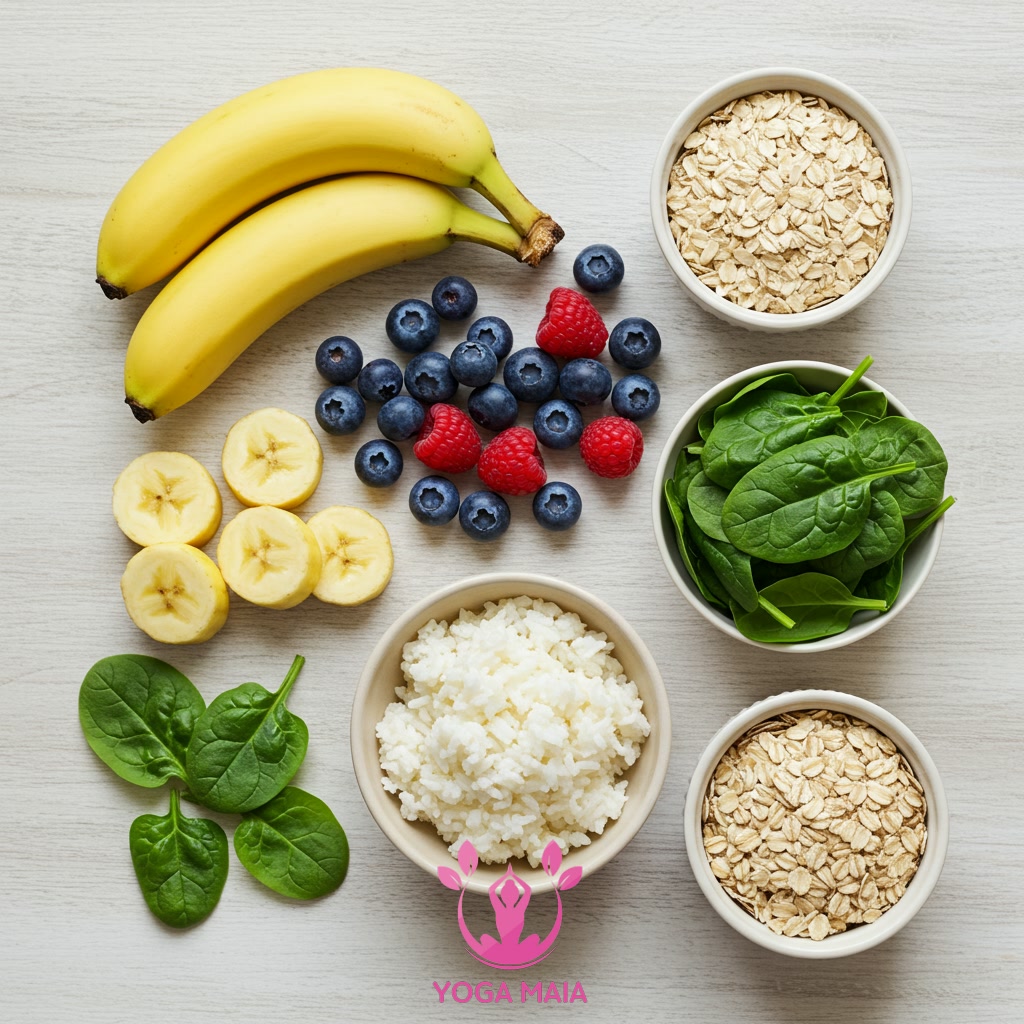 Digestive-Friendly Foods to Support Your Practice
Digestive-Friendly Foods to Support Your Practice
Section 5: Timing Your Meals and Hydration Around Yoga
Building on the idea of choosing easily digestible foods, timing your meals and hydration is equally critical for a comfortable and effective yoga practice. Eating too close to your session can lead to indigestion, bloating, or sluggishness, making certain poses uncomfortable or difficult. A general rule of thumb is to allow at least 2-3 hours after a substantial meal before practicing yoga. This gives your body ample time for initial digestion. If you feel you need a little energy boost closer to your practice, a small, easily digestible snack, such as a banana or a few dates, 30-60 minutes prior can be helpful. For hydration, sip water throughout the day rather than consuming large amounts right before class, which can cause discomfort or frequent urges to use the restroom. Experiment to find the timing that works best for your individual digestive system and allows you to feel light and comfortable on your mat.
 Timing Your Meals and Hydration Around Yoga
Timing Your Meals and Hydration Around Yoga
Section 6: Practical Tips for a Bloat-Free Yoga Session
Beyond mindful timing and hydration, several practical strategies can further help ensure your yoga practice remains comfortable and free from bloating. Pay attention to how you eat your pre-yoga meal or snack; eating slowly and chewing your food thoroughly can significantly aid digestion and reduce swallowed air, a common cause of bloating. Avoid carbonated beverages entirely before your session, as the bubbles introduce gas into your system. Similarly, limit or avoid foods known to produce gas, like beans, lentils, and cruciferous vegetables, in the immediate hours leading up to your practice, especially if you are sensitive to them. Sip water gradually rather than gulping large amounts, which can also lead to discomfort. By implementing these simple, conscious eating habits alongside proper timing, you create an optimal internal environment, allowing you to focus entirely on your breath and movement during your yoga flow without the distraction of digestive unease.
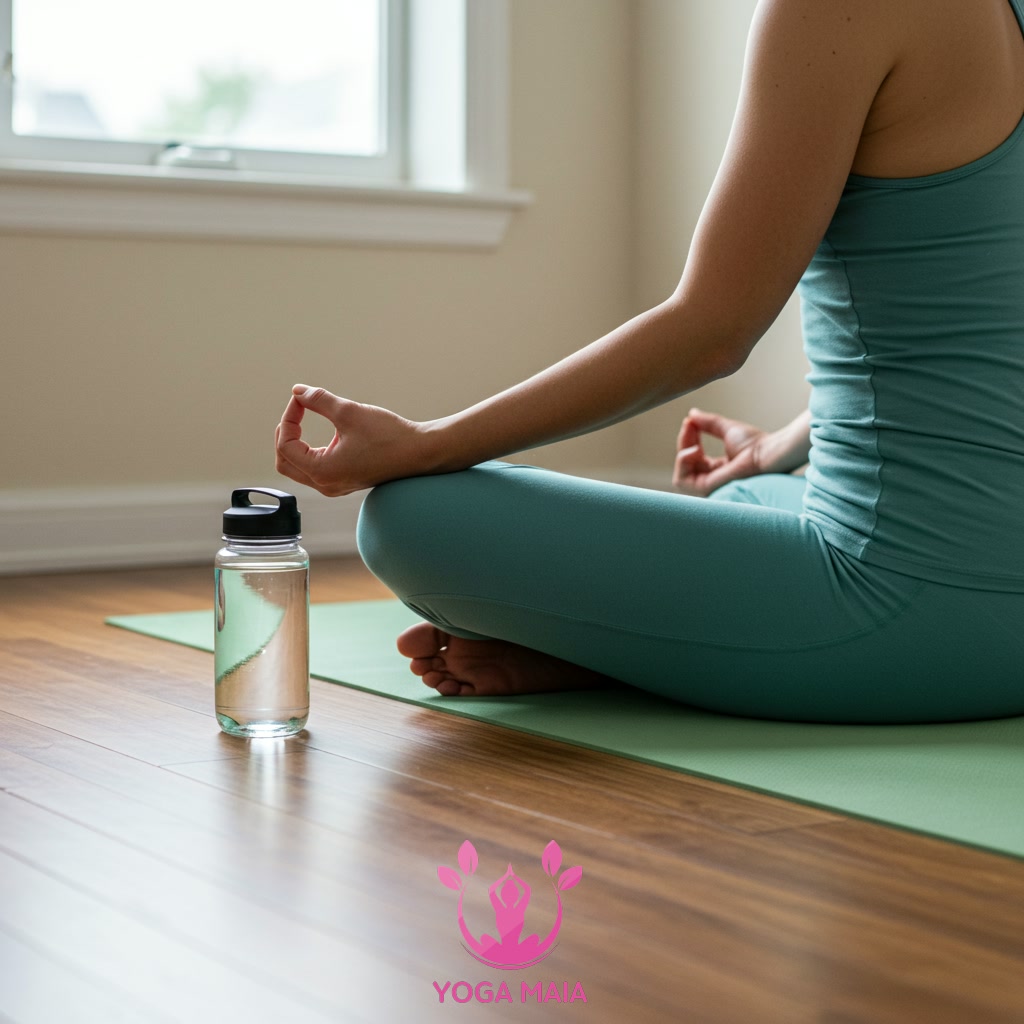 Practical Tips for a Bloat-Free Yoga Session
Practical Tips for a Bloat-Free Yoga Session












